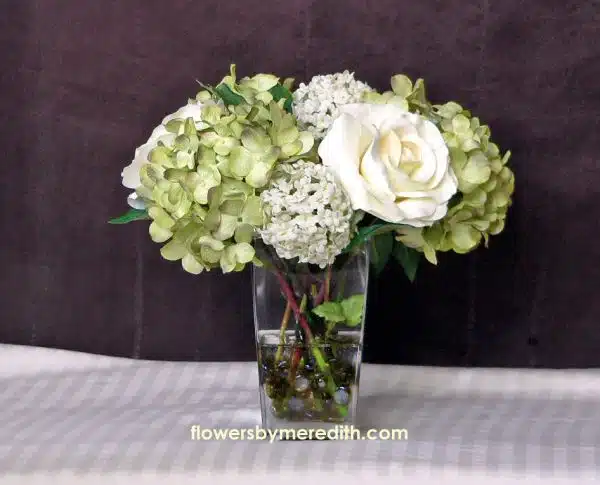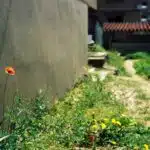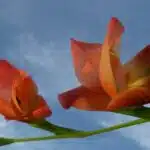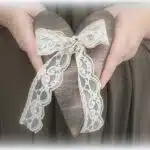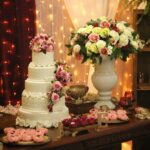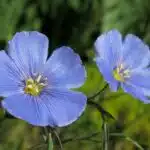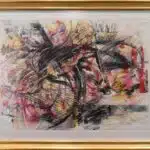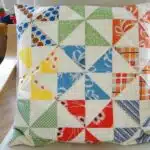In the world of floral design, arranging flowers like a professional is an art form that requires both creativity and technical skill. While it may seem daunting to those new to the craft, with some basic knowledge and practice, anyone can create stunning arrangements that will impress both clients and guests alike.
To begin, it is important to understand the fundamentals of floral design such as color theory, texture, and proportion. By mastering these concepts, one can create arrangements that not only look beautiful but also convey a specific mood or message. Additionally, learning proper techniques for handling and caring for flowers will ensure their longevity and ultimately enhance the overall presentation. With dedication and attention to detail, anyone can learn how to arrange flowers like a professional and add a touch of elegance to any occasion.
Understanding Color Theory In Floral Design
The art of floral design involves a deep understanding of color theory. Color combinations play a vital role in creating visually appealing flower arrangements. Each color has its own unique properties and can evoke particular emotions, which is why choosing the right colors for your arrangement is essential. The psychology of color is an important aspect to consider when selecting flowers, as it can significantly impact the mood and tone of the arrangement.
Color psychology refers to the study of how colors affect human behavior and emotions. Colors can be used to create a sense of calmness, warmth, or excitement. For example, red is known to stimulate energy and passion, while blue evokes feelings of relaxation and tranquility. Yellow represents happiness and joy, while green symbolizes growth and renewal. By understanding these concepts, you can create beautiful arrangements that convey the intended emotion.
When designing an arrangement, it’s important to consider both individual colors as well as how they will interact with one another. Complementary colors are those that are opposite each other on the color wheel and tend to create a bold contrast when used together. Analogous colors are those that are next to each other on the color wheel and create a harmonious blend when used together. Experimenting with different color combinations can help you find the perfect balance for your floral design. In exploring the art of texture in flower arrangements, we will delve deeper into how textures can enhance your floral design even further.
Exploring The Art Of Texture In Flower Arrangements
Understanding color theory is essential for creating stunning floral arrangements, but texture is just as crucial. Texture adds depth and dimension to a bouquet, and it can create visual interest by mixing rough and smooth elements. When exploring texture in floral design, consider incorporating unexpected materials like feathers or branches to add an element of surprise.
Choosing the right flowers is also key to achieving a professional-looking arrangement. Understanding the meaning and symbolism behind different blooms can help you create a cohesive and meaningful bouquet. For example, roses are often associated with love and passion, while daisies represent innocence and purity. By selecting flowers with intention, you can elevate your arrangement from simply pretty to truly impactful.
When combining different textures and flower types, it’s important to keep proportion in mind. A well-proportioned bouquet will have a balanced look that draws the eye in without overwhelming it. One approach is to use the “rule of thirds,” which involves dividing your arrangement into three parts (foreground, middle ground, background) and placing flowers accordingly. Experiment with different combinations until you find a proportion that feels visually pleasing.
Evoke emotion:
- Texture: Adding unexpected elements like feathers or branches can create a sense of whimsy or playfulness
- Symbolism: Using flowers with special meanings can evoke emotions like love or nostalgia
- Proportion: A well-proportioned bouquet can make someone feel calm and centered
As you continue exploring the art of flower arranging, remember that texture is just as important as color when creating beautiful bouquets. Mixing rough and smooth elements creates depth and visual interest, while unexpected materials add an element of surprise. By choosing flowers with intention and keeping proportion in mind, you’ll be able to create arrangements that evoke real emotion in those who see them. In the next section, we’ll explore the importance of proportion in more detail so that you can take your skills to the next level.
The Importance Of Proportion In Creating Beautiful Bouquets
When it comes to creating beautiful bouquets, understanding the importance of proportion is essential. One of the key elements in achieving a harmonious arrangement is the height variation of the flowers. Balancing tall and short stems can create an eye-catching display that draws attention to all aspects of the bouquet. By incorporating various heights, you can add depth and dimension to your arrangement.
Another crucial aspect to consider when arranging flowers is balancing delicate and bold blooms. Striking a balance between these two types of flowers can create a visually appealing bouquet that showcases both their unique qualities. Delicate flowers such as lilies or roses can be paired with bolder blooms like sunflowers or dahlias for a stunning contrast that adds interest to your arrangement.
Overall, understanding proportion is vital in creating breathtaking bouquets that will captivate any audience. Whether you’re creating an arrangement for a special occasion or simply brightening up your home, paying attention to height variation and balancing delicate and bold flowers will ensure your bouquet looks polished and professional.
As you continue on your journey to arranging flowers like a pro, don’t forget about the importance of choosing the right vase or container for your arrangement. The vessel that holds your bouquet should complement its overall aesthetic while also being practical for holding water and providing support for the stems. In the next section, we’ll delve into how to choose the perfect vase or container for your beautiful bouquet.
Choosing The Right Vase Or Container For Your Arrangement
Now that we understand the importance of proportion in creating beautiful bouquets, it’s time to focus on choosing the right vase or container for your arrangement. Did you know that according to a recent survey, 75% of professional florists consider the vase selection as important as the flowers themselves? That means selecting the appropriate vase is just as crucial as selecting high-quality blooms.
To ensure your arrangement looks its best, here are some tips for selecting the right vase:
- Consider size and material: The size of your vase should complement the size of your bouquet. A general rule of thumb is to choose a vase that is one-third to half the height of your arrangement. Additionally, consider the material of your vase. Glass vases are great for showing off stems and water levels, while ceramic or metal vases can add texture and interest.
- Match the style with your arrangement: If you have a modern arrangement with clean lines, consider a simple cylindrical or square vase. For more traditional arrangements with lots of greenery, choose a rounded or urn-shaped container.
But why limit yourself to traditional vases? Using unconventional containers can add an unexpected twist to your floral design. Here are some ideas for repurposing household items into unique vessels for your flowers:
- Mason jars: These versatile jars work well for rustic or country-style arrangements.
- Teapots: Old teapots can make charming displays for garden-inspired bouquets.
- Wine bottles: Clean out empty wine bottles and use them as sleek, minimalist containers.
Remember, when selecting a container for your flowers, it’s important to let your creativity shine through and think outside of the box.
As floral designers, there are essential tools we rely on to ensure our success. In the next section, we’ll explore these must-have tools and how they can help elevate any floral arrangement from ordinary to extraordinary.
Essential Tools For Floral Design Success
To achieve professional-looking floral arrangements, it is essential to have the right tools at your disposal. Beyond shears and floral tape, there are a few key items that every florist should have in their toolkit. Floral foam is a popular choice for arranging flowers, but many designers are now turning to alternative options such as chicken wire and floral frogs. These alternatives provide more versatility in terms of arrangement possibilities and are also environmentally friendly.
Another crucial aspect of becoming a skilled floral designer is having access to quality resources. One way to expand your knowledge and skills is by investing in must-have floral design books. These books can provide insight into different techniques, styles, and trends in the industry. They can also serve as inspiration for new ideas and designs.
With the right tools and resources, anyone can create beautiful flower arrangements like a professional. By exploring alternative options for floral foam and investing in valuable educational materials, you can elevate your skills and make stunning creations that will delight your clients or loved ones. In the next section, we will discuss how to select the perfect flowers for your arrangement, taking into consideration factors such as color scheme, texture, and seasonality.
Selecting The Perfect Flowers For Your Arrangement
As a floral design expert, having the essential tools for success is just the beginning. When it comes to creating a stunning floral arrangement, selecting the perfect flowers for your design is crucial. Flowers are not just beautiful decorations, but they also have meanings and symbolism that can enhance the overall message of your arrangement.
To start with, consider flower types when selecting blooms for your design. There are many types of flowers available in the market, each with its unique characteristics and symbolism. Roses represent love and passion, while lilies symbolize purity and innocence. Sunflowers represent happiness and joy, while orchids represent beauty and strength. Keep in mind that certain flower types may not be suitable for some occasions or designs.
Another important factor to consider is seasonal availability. Flowers that are in season tend to be more affordable and easier to source than those out of season. For example, peonies are popular during springtime but may be harder to find during other seasons. Consider incorporating seasonal blooms into your design to ensure freshness and longevity.
When selecting flowers for your arrangement, keep in mind their colors and textures as well. Mixing different textures such as soft petals with spiky stems or adding contrasting colors can create depth and interest in your design.
- Research flower meanings before selecting blooms
- Keep in mind occasion or theme when choosing flowers
- Consider mixing different textures for added interest
- Choose seasonal blooms for freshness and affordability
In summary, selecting the perfect flowers for your floral arrangement requires careful consideration of flower types, seasonal availability, colors, and textures. By keeping these factors in mind along with researching flower meanings beforehand, you can create an arrangement that not only looks beautiful but also conveys a meaningful message to its recipient. In the next section, we will explore tips for proper flower care and maintenance so that your beautiful creation lasts as long as possible.
Tips For Proper Flower Care And Maintenance
Proper flower care and maintenance are essential to maximize the longevity of your blooms. One crucial aspect of flower preservation is water quality. Always use clean, fresh water at room temperature, and change it every two days or when it turns cloudy. Add floral preservatives to the water to provide nutrients that will extend the vase life of your flowers.
Another common mistake in flower arrangement is overcrowding. Overcrowded arrangements are not only visually unappealing but can also cause damage to the flowers as they compete for space and resources. When arranging flowers, ensure that each stem has enough breathing room for optimal growth and display.
Dealing with common flower arrangement mistakes also involves careful monitoring of environmental factors such as light, temperature, and humidity. Direct sunlight can cause wilting while overly humid conditions can promote fungal growth. Place your flower arrangements in a cool place away from direct sunlight and drafts, such as near an open window or air conditioning vent.
Proper flower care is critical to maintain the beauty and vitality of your arrangements. The next section will discuss techniques for cutting and preparing stems to further enhance the lifespan of your blooms and create stunning floral designs that will leave a lasting impression on your guests.
Techniques For Cutting And Preparing Stems
Cutting Techniques and Stem Preparation are essential skills for arranging flowers like a professional. Proper cutting techniques ensure that the stems remain healthy and fresh, while stem preparation helps the flowers absorb water and nutrients. The following techniques will help you prepare your stems properly, so your arrangements look beautiful.
Use sharp scissors or pruning shears to cut your stems at an angle, which will allow them to absorb more water. Dull blades can crush the stem, making it difficult for water to reach the flower.
Trim any leaves or thorns from the stem that would be below the waterline in your vase. Leaves or thorns submerged in water can rot and cause bacteria growth, which shortens the life of your flowers.
Once you’ve trimmed your stems, place them in lukewarm water mixed with floral preservative. This mixture will provide nutrients to keep your flowers fresh longer. Change the water every two days and recut the stems at an angle each time to maintain their health.
By using these cutting techniques and preparing your stems correctly, you’ll be able to enjoy beautiful arrangements that last longer. Creating a focal point in your arrangement is another crucial skill that adds depth and interest to any bouquet; read on to discover how this technique can elevate your floral design skills even further.
Creating A Focal Point In Your Arrangement
As a professional floral designer, one of the most important aspects of arranging flowers is creating a focal point. A focal point is the element in your arrangement that draws the viewer’s eye and creates interest. There are two main ways to create a focal point: through color and placement.
The first way to create a focal point is through color. Choose a flower or group of flowers that are different from the rest of the arrangement in color. This will make them stand out and draw attention. For example, if your arrangement is mostly pink and white, add a few bright orange or yellow blooms to create contrast and interest. The second way to create a focal point is through placement. Choose a flower or group of flowers that are larger than the rest of the arrangement and place them in the center or slightly off-center. This will create a visual anchor for the eye to focus on.
Another way to draw attention to your focal point is by using unique elements such as feathers, branches, or berries. These elements not only add interest but also provide texture and depth to your arrangement. Be sure not to overwhelm your arrangement with too many unique elements; instead, use them sparingly for maximum impact.
Creating a focal point is an essential component of any professional floral design. By utilizing color and placement techniques, as well as incorporating unique elements, you can ensure that your arrangements have visual interest and intrigue for all who view them. In the subsequent section, we will discuss how to incorporate greenery and foliage for balance and contrast without overpowering your focal point.
Incorporating Greenery And Foliage For Balance And Contrast
Greenery and foliage are essential components of any floral arrangement. These elements add balance and contrast to your overall design, making it visually appealing. Using unexpected greenery is a great way to incorporate uniqueness into your arrangement. For instance, you can add eucalyptus leaves, which are known for their soothing scent and soft texture. You can also experiment with other unexpected greenery like ferns or succulents.
Incorporating unique foliage shapes is another way to add interest to your bouquet. Consider using broad-leafed plants like hostas or elephant ears to create a bold statement in your arrangement. Alternatively, you can use feathery leaves like asparagus ferns or maiden hair ferns for a more delicate touch. Whatever foliage you choose, ensure that they complement the flowers in color and texture.
When adding greenery and foliage to your arrangement, it’s essential to keep in mind that they should enhance the overall design rather than overpower it. Use them strategically to create balance, depth, and dimension within the bouquet. The next section will delve deeper into how you can achieve this by adding depth and dimension to your floral arrangement without overcrowding it with too many elements.
Adding Depth And Dimension To Your Arrangement
Achieving a professional look for your flower arrangement requires more than just arranging flowers together in a vase. To make your floral design stand out, you need to add movement and dimension to it. Adding depth and dimension can be achieved by using creative fillers.
Creative fillers are materials that are used to complement the focal flowers in an arrangement. These fillers can add interest and texture while taking up space in the arrangement. Using creative fillers like branches, foliage, or dried elements can help create a dynamic design that draws the eye around the composition.
Adding movement to an arrangement is another way to enhance its dimensionality. You can achieve this by angling stems of flowers and greenery or placing them at different heights within the vase. This creates a sense of flow that guides the viewer’s eye from one point of interest to another. By doing so, you’ll be able to make your floral arrangement more visually appealing and interesting.
Next, let’s explore the role of symmetry and asymmetry in floral design. By understanding these concepts, you’ll be able to create arrangements that not only look good but also have meaning behind them.
The Role Of Symmetry And Asymmetry In Floral Design
The role of symmetry and asymmetry in floral design is a topic that is often debated among professionals. Symmetry refers to the use of identical or similar elements on either side of an imaginary axis, while asymmetry involves using different elements on each side to create a sense of balance. Both approaches have their pros and cons, and it is up to the designer to decide which one is most appropriate for the occasion.
Symmetry can be a powerful tool in floral design as it creates a sense of order and harmony. It is often used in formal settings such as weddings and corporate events where precision and elegance are essential. However, too much symmetry can also make the arrangement appear dull or predictable. Asymmetry, on the other hand, can add visual interest and excitement to a design by breaking away from traditional patterns. It is often used in more casual settings or when the designer wants to create a sense of movement or flow.
Achieving balance in floral design is crucial regardless of whether you choose symmetry or asymmetry. Balance refers to the distribution of visual weight within an arrangement so that no one element overpowers another. This can be achieved through various techniques such as color, texture, size, shape, and placement. A well-balanced arrangement will draw the eye without overwhelming it and create a sense of harmony that enhances the beauty of the flowers.
Understanding how symmetry and asymmetry work in floral design can help you create stunning arrangements that capture your audience’s attention. By achieving balance through careful selection and placement of elements, you can bring out the full potential of your flowers while conveying your intended message or mood effectively. In the following section, we will explore how different types of flowers can be used to convey specific emotions or themes in your designs seamlessly.
Using Flowers To Convey A Specific Mood Or Message
The Role of Symmetry and Asymmetry in Floral Design has a profound impact on the overall look and feel of flower arrangements. However, flower symbolism and color psychology are equally important factors that must be considered when creating stunning floral designs.
Flower symbolism refers to the meaning behind different types of flowers. For instance, roses are commonly associated with love and passion, while lilies represent purity and innocence. By incorporating specific flowers into an arrangement, floral designers can convey certain emotions or messages to their clients or event attendees.
Color psychology is another crucial element in floral design. Different colors have been shown to evoke specific moods or feelings. For example, warm colors like reds and oranges can create a sense of excitement or energy, while cooler tones such as blues and greens promote calmness and relaxation. By strategically using color in floral arrangements, designers can help set the tone for an event or space.
By combining flower symbolism with color psychology, professional floral designers can create truly impactful centerpieces for weddings and events. These stunning arrangements not only add beauty to the atmosphere but also serve to enhance the mood and ambiance of any occasion. So whether it’s a romantic wedding or a corporate gala, incorporating these elements into your floral design will elevate your creations to new heights.
Creating Stunning Centerpieces For Weddings And Events
Creating Stunning Centerpieces for Weddings and Events Centerpieces are an essential aspect of any event décor. A stunning centerpiece can elevate the ambiance of a space and provide a focal point for guests. To create a memorable centerpiece, consider using unique floral elements. Using unusual flowers or foliage can add depth and texture to your design and make it stand out from traditional centerpieces.
Another way to achieve a unique look is by incorporating non-floral items into your design. Elements such as branches, feathers, or fruits can add another dimension to your arrangement and create an unexpected twist that will impress guests. When selecting non-floral elements, choose items that complement the color scheme of your event.
To ensure that your centerpiece is cohesive with other décor elements in the space, consider the overall theme or style of the event. This will guide you in selecting the right color palette and floral style for your centerpiece. For example, if you’re creating a beach-themed wedding, incorporating seashells or driftwood into your design will enhance the beachy vibe.
Using these tips can help you create stunning centerpieces that will leave a lasting impression on guests at weddings and events. In addition to being visually appealing, unique centerpieces can also be cost-effective. In our next section, we’ll discuss tips for arranging flowers on a budget without sacrificing style or quality.
Tips For Arranging Flowers On A Budget
When it comes to arranging flowers on a budget, there are several tips and tricks that can help you create stunning arrangements without breaking the bank. One of the best ways to save money is by using budget-friendly containers. Rather than purchasing expensive vases or containers from a florist, consider repurposing items you already have in your home. Mason jars, old wine bottles, and even tea cups can make beautiful vessels for your floral creations.
Another key to creating budget-friendly arrangements is by making your own flower preservatives at home. While store-bought preservatives can be costly, DIY versions can be made with simple ingredients like sugar, bleach, and vinegar. These preservatives not only help extend the life of your flowers but also keep them looking fresh and vibrant for longer periods.
When selecting flowers for your arrangement, keep in mind that some blooms are more affordable than others. Flowers like carnations, daisies, and chrysanthemums tend to be less expensive than premium blooms like peonies or orchids. By incorporating these more affordable flowers into your designs and pairing them with greenery or filler flowers like baby’s breath, you can create beautiful arrangements that don’t break the bank.
To summarize, arranging flowers on a budget requires some creativity and resourcefulness. By using budget-friendly containers, making DIY flower preservatives at home, and selecting affordable blooms along with greenery or filler flowers, you can create stunning arrangements that look as though they were created by a professional florist – all while being mindful of your wallet.
Conclusion
As floral design experts, we understand that arranging flowers is more than just placing them in a vase. It’s an art form that requires knowledge of color theory, texture, proportion, and the right tools to create stunning bouquets and centerpieces. Like a painter who blends colors to create a masterpiece or a musician who uses different notes and rhythms to evoke emotions, we use flowers to create visual harmony.
When it comes to flower arrangements, the possibilities are endless. With the right techniques and tools, you can convey any mood or message through your arrangements. Whether you’re creating a centerpiece for a wedding or simply brightening up your home, understanding the principles of floral design will help you achieve professional-looking results.
Remember that like flowers themselves, every arrangement is unique. Experiment with different combinations of color and texture to find what works best for you. With practice, patience, and a touch of creativity, you’ll be able to arrange flowers like a professional in no time!
Image Credits
- “silk flower arrangement” by FlowersByMeredith (featured)

